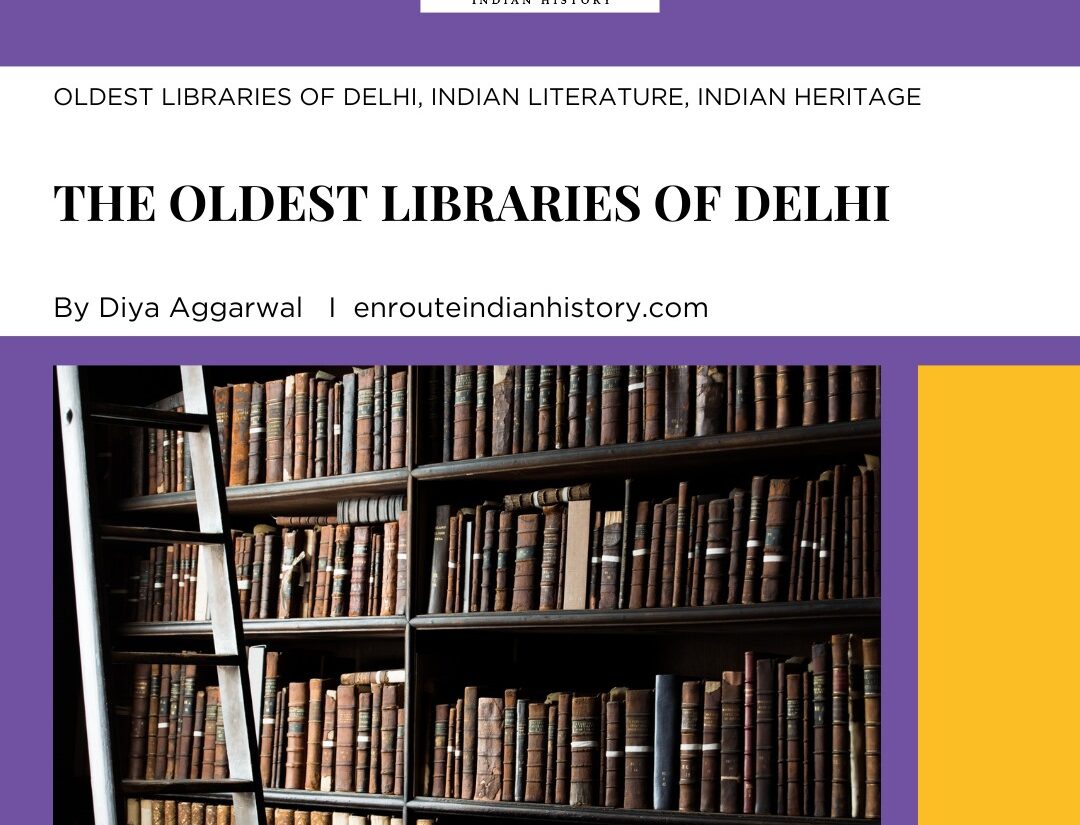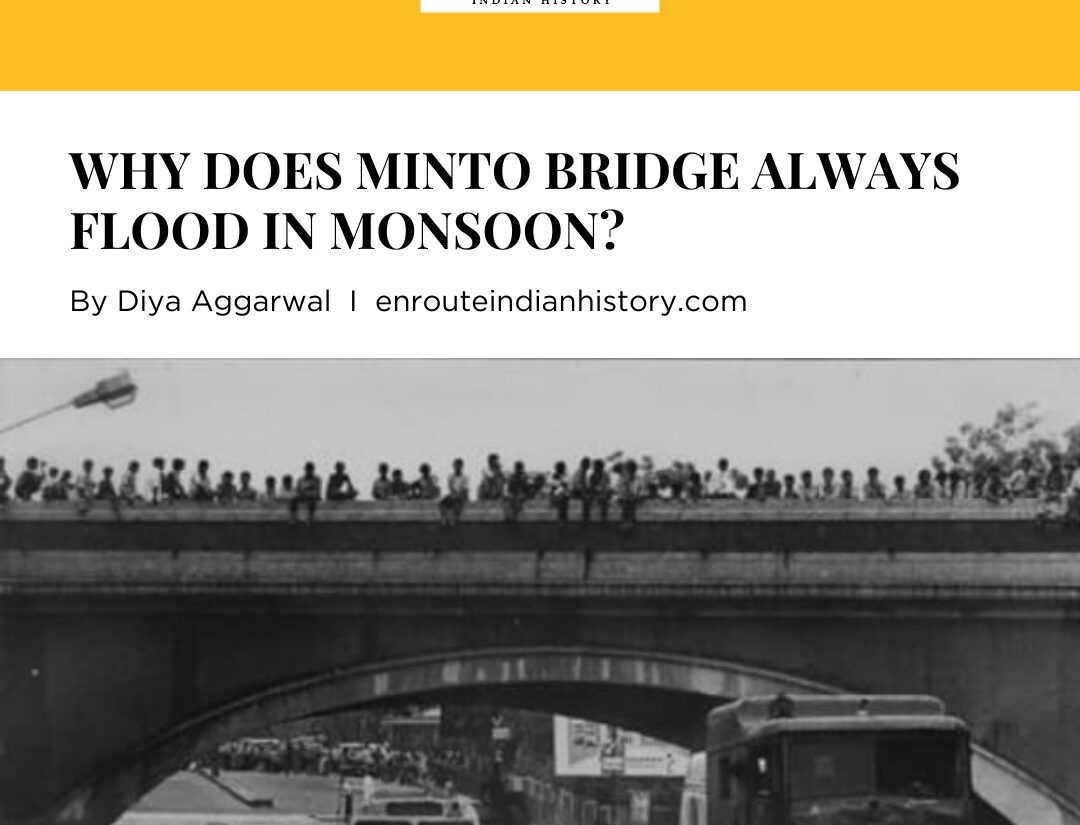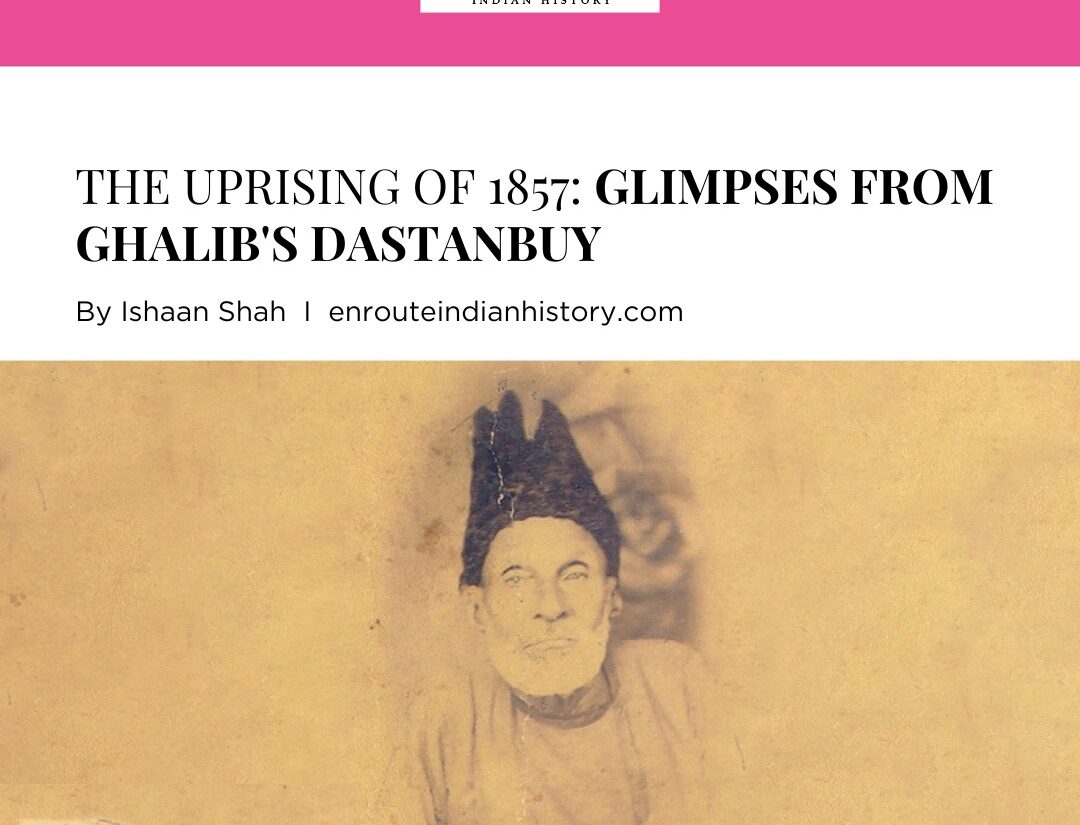
For centuries, Delhi has been a melting pot of cultures, ideas, and histories. Having been a continually inhabited city for ages, its streets whisper tales of empires risen and fallen, poets who once walked its alleys, and a rich literary tradition that has flourished within the Indian heritage. Central to this narrative of intellectual and literary vibrancy are the city’s oldest libraries, repositories of knowledge that have stood as bastions of learning, knowledge, and cultural exchange.

(Adobe Stock – AI-generated image depicting students from around the world studying at the ancient Nalanda University in Bihar, India)

(Adobe Stock – Ruins of the Nalanda University)
The presence of ancient Indian literature even now necessitates the existence of some sort of places where these manuscripts were stored, preserved, and made accessible. Even so, some educational systems like the Buddhist education system centered around partaking in learning in residential universities situated in larger monasteries. The Buddhist Vihara at Nalanda is one such example, which possessed a library system. Some Kings also built their own personal libraries. Libraries in the Gupta period housed both Buddhist and non-Buddhist literature. The famed Nalanda and Takshashila universities, though not located in Delhi, were renowned centers of learning that influenced intellectual discourse in the region. They housed rare Indian literature and featured manuscripts on philosophy, religion, and other texts on grammar, logic, Vedas, medicine, etc. Nalanda University’s systematic library flourished immensely until it was burned down by Bakhtiyar Khalji. Indian literature, preserved in libraries, has always been an integral part of Indian heritage.

(Tawarikh Khwani, Dr. Rehan Asad – the Sher Mandal in the Old Fort that was converted into a royal library by Humayun)
With the advent of Islamic rule in the 12th century, Delhi emerged as a hub of Islamic scholarship and culture. Delhi developed a flair for learning through the direct patronage and private libraries of Delhi Sultanate rulers such as Alauddin Khilji and Firoz Shah Tughlaq. Jalal-ud-din Khilji, a poet and the Sultan, established the Imperial Library at Delhi appointing the famed poet Amir Khusrau as its librarian. Hazrat Nizamuddin Auliya, a revered and renowned Sufi saint, also established a library in his Khangah at Ghiyathpur in Delhi, through public donations. This public library contained many manuscripts, all accessible to the general public. All Mughal rulers also patronized learning and maintained their royal palace libraries. Humayun is believed to have fallen to his death from the stairs of his library (which was remodeled from being a pleasure house) in Purana Qila. Akbar developed the functioning and art of librarianship by introducing classification for storage in his Imperial Library.
The colonial era witnessed the transformation of Delhi’s literary landscape with the establishment of British institutions of learning. It is against this backdrop of cultural renaissance and political turmoil, that one of the oldest libraries of Delhi was set up.

(The Hindu, Sushil Kumar Verma – One of the oldest libraries of Delhi, the Hardayal Municipal Public Library)
HARDAYAL MUNICIPAL PUBLIC LIBRARY
Location – Hardyal Municipal Library, Chandni Chowk Rd, Kaccha Bagh Area, Chandni Chowk, Delhi, 110006
Established in 1862, Hardayal Municipal Public Library is named after Delhi’s revolutionary freedom fighter – Lala Hardayal. Initially set up as a reading room known as the Institute Library, it catered exclusively to the Englishmen who donated the several books they carried for the long and arduous ship journey to India. Located within the Lawrence Institute, present-day Town Hall, in Chandni Chowk; the building was constructed between 1861 – 1866. In 1902, the library underwent a name change to become the Delhi Public Library and relocated to a modest building in Kaccha Bagh.
However, in 1912, following an unsuccessful assassination attempt on Lord Viceroy, the library was officially renamed the Hardinge Municipal Public Library in 1916 upon its relocation to the newly constructed building, where it retained its original collection and furniture. In 1942, the library was granted autonomous status with full financial support from the Municipal Corporation. In 1970, the library underwent another final name change to become the Hardayal Municipal Public Library. The governance of the library is overseen by a Managing Committee, comprising elected members from various municipal corporations and individuals elected by library subscribers.
The library boasts a remarkable collection of over 170,000 books in multiple languages, including Hindi, English, Urdu, Arabic, Persian, and Sanskrit. Notably, it houses around 8,000 rare books, amongst which the oldest book is block-printed. Its treasures include works such as “History of the World” by Sir Walter Raleigh (1676 to 1677), and the Persian version of the Mahabharata by Abul Fazal Faizi.
In recent times, however, the condition of the 161-year-old library has deteriorated due to a lack of funding. The library had stopped receiving power, forcing visitors are compelled to gather beneath the skylight to read, highlighting the dire conditions facing this historic institution. The Municipal Corporation of Delhi should undertake provisions to preserve one of the oldest libraries of Delhi.

(The Week, Aayush Goel – The Delhi Public Library)
DELHI PUBLIC LIBRARY
Location – Dr. Shyama Prasad Mukherjee Marg, Opp. Old Delhi Rly. Station, Delhi- 110006
Established in 1951 under the auspices of the Ministry of Education, Government of India, and with support from UNESCO, the Delhi Public Library (DPL) is another one of the oldest libraries of Delhi. Delhi Public Library started as a pilot project of UNESCO, aimed at fostering the development of public library services in adult and fundamental education throughout India and Southeast Asia.
Inaugurated by the first Prime Minister of India, Pt. Jawahar Lal Nehru, on October 27, 1951, the library has since grown to serve Indian literature to the entire metropolitan area of Delhi.

(www.whatshot.in – the mobile library services of the Delhi Public Library)
With the Delivery of Books Act, every publisher in India had to submit a copy of their publication to some libraries in India including this. The Delhi Public Library (DPL) initiated a mobile library service to reach remote areas of Delhi and nearby villages. These mobile library buses, resembling DTC buses, were dubbed “chalti-phirti library.”
Currently, the Delhi Public Library operates under the administrative purview of the Ministry of Culture, Government of India, with its headquarters situated in Chandni Chowk. Committed to the principle of inclusivity, the library offers free library services to individuals of all ages and backgrounds, transcending barriers of sex, caste, creed, and religion. In 2019, it had a total collection of 20,65,720; out of which 6,25,982 books could be accessed through WebOPAC. Additionally, the library seeks to cater to the recreational needs of its patrons, providing a platform for socio-cultural activities aimed at harnessing their latent potential and contributing to the Indian heritage.

(Indian Express, Tashi Tobgyal – The Marwari Library at Chandani Chowk)
MARWARI LIBRARY
Location – Shop No, 1457, Chandni Chowk Rd, Kucha Mahajani, Chandni Chowk, New Delhi, Delhi, 110006
Established in April 1915 by Kedarnath Goenka, a Marwari merchant inspired by Gandhian ideals, this stands out from the oldest libraries of Delhi. Mahatma Gandhi’s visit to this institution in 1917, played a pivotal role in integrating the Marwari community into the mainstream national movement. The visitors’ register of the library still holds entries documenting visits and messages from notable freedom fighters of the country, including Mahatma Gandhi and Vijayalakshmi Pandit, among others. Over the years, the Marwari Public Library hosted esteemed personalities such as Bal Gangadhar Tilak and Madan Mohan Malaviya, as well as serving as a venue for Congress meetings on multiple occasions.

(DailyO, Aakriti Mandhwani – Visitor entry by freedom fighter Bal Gangadhar Tilak at the library.)
Initially established as a public library primarily stocked with newspapers, magazines, and Hindi literature, it later became a hub for Indian literature. Housing encyclopedias, census reports from the 1900s, and books on the history of Congress, the public library is free of cost. Originally characterized by a Victorian exterior adorned with white columns, the two-storeyed building has transformed into a contemporary library. It now features distinct sections, with one area designated for readers and another dedicated to housing its extensive collection of books. Managed by The Marwari Charitable Trust, the Marwari Public Library plays an important role in preserving the Indian heritage and Indian literature by storing a wealth of printed sources in Hindi from the early 1900s, making it an invaluable resource for scholars and researchers.
In conclusion, the oldest libraries of Delhi stand as a testament to the city’s intellectual vibrancy and the rich heritage of Indian literature. These public libraries are just a few of the oldest libraries of Delhi. Following the Independence of India, many more new libraries started functioning with memberships. As centers of community engagement, cultural exchange, and political activism, the oldest libraries of Delhi have fostered a spirit of inclusivity, empowering individuals from all walks of life to access knowledge and contribute to the fabric of Indian society.
CITATION
1. “Hardayal Municipal Heritage Public Library.” Azadi Ka Amrit Mahotsav, Ministry of Culture, Government of India. amritmahotsav.nic.in/district-repository-detail.htm?2771.
- Gupta, A. (2021). Delhi Public Library: Oldest Mobile Library of the City. [online] Zikr-e-Dilli.
- Rakesh Kumar Bhatt (1995). History and Development of Libraries in India. Mittal Publications.
- Mahajan, S. (2023). With no power for over two months, Hardayal Public Library left in the dark. The Hindu. [online]
- Dpl.gov.in. (2018). About Us. [online]
- nvli.in. (n.d.). Delhi Public Library | INDIAN CULTURE. [online]
- Mandhawani, A. (2015). Delhi’s Marwari library is a treasure trove free from politics. [online] www.dailyo.in.
- INDIAN CULTURE. (2024). Marwari Library. [online] Available at: https://indianculture.gov.in/node/2820131























